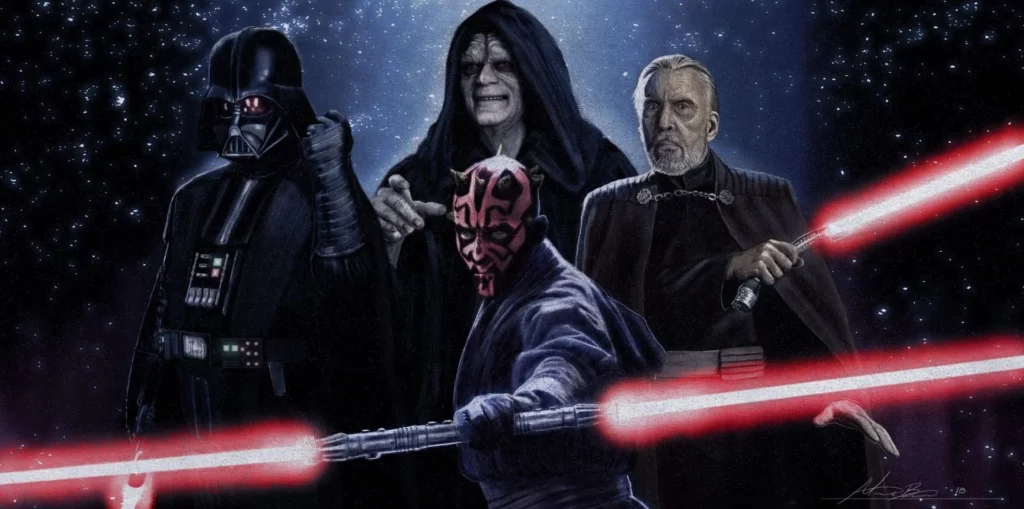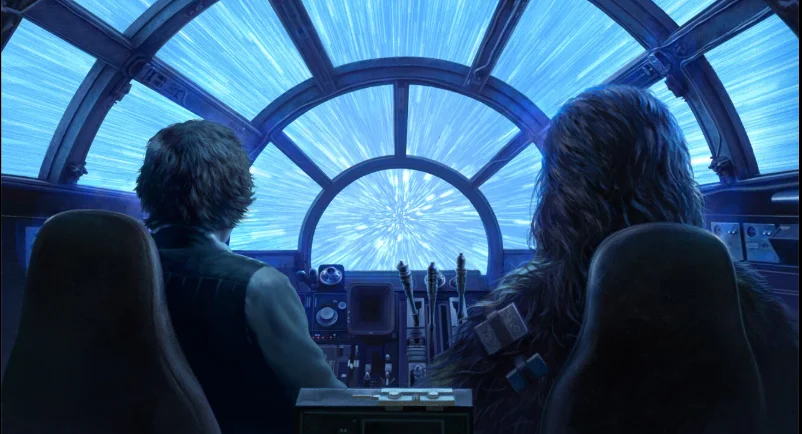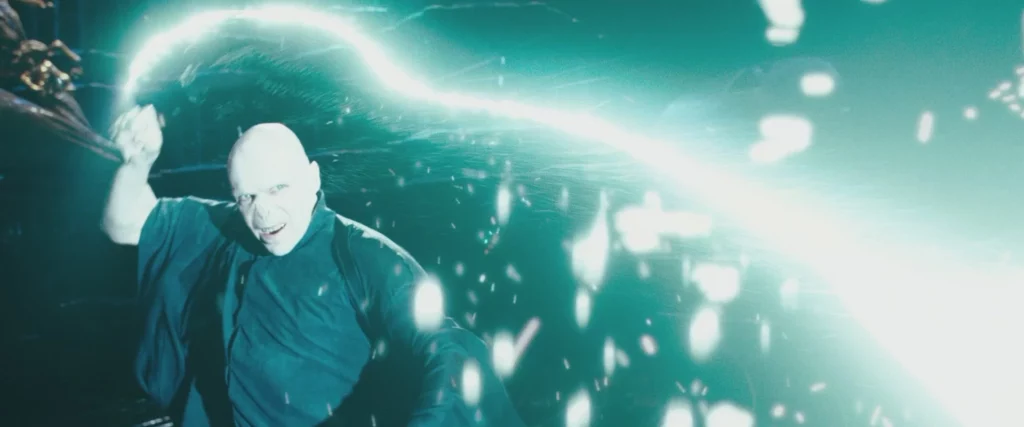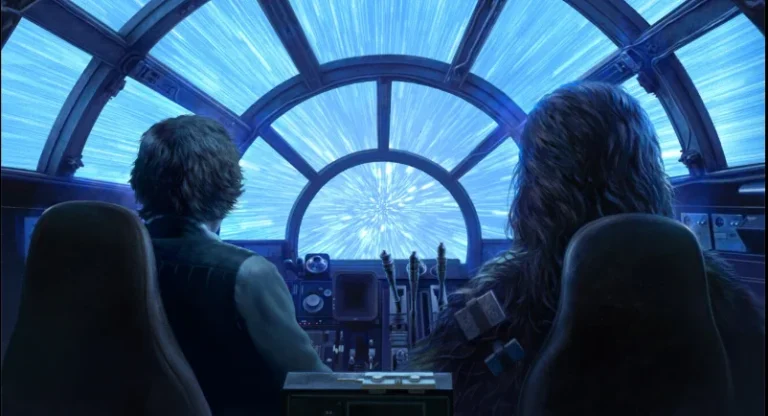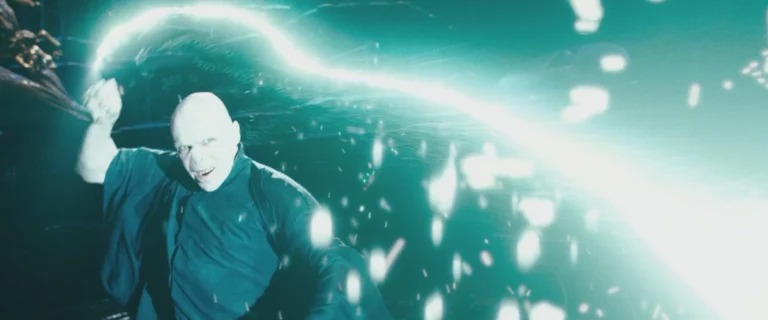The Sith have always been the most enigmatic and powerful force in the Star Wars universe. These dark lords of the Sith wield the Dark Side of the Force, manipulating it to achieve their goals of domination and control. Their mysterious nature and formidable powers have captivated Star Wars fans for decades, making the Sith a central element in the epic saga.
In this comprehensive guide, we’ll explore the origins, philosophy, and history of the Sith. You’ll learn about the infamous Sith Lords who have shaped the galaxy, from Darth Bane to Darth Sidious, and discover the secrets of their dark powers. Whether you’re a longtime Star Wars fan or new to the lore, this guide will provide you with a deep understanding of the Sith and their enduring legacy.

This guide covers everything you need to know about the Sith, including:
Prepare to journey into the dark heart of the Star Wars universe and uncover the secrets of the Sith. This guide will provide you with a thorough understanding of their power, influence, and enduring legacy.
Origins of the Sith
The Ancient Sith Species
The Sith Order traces its origins back to the ancient Sith species, a red-skinned humanoid race native to the planet Korriban. These original Sith were Force-sensitive and practiced a primitive form of the Dark Side. Over time, exiled Dark Jedi discovered the Sith species and enslaved them, eventually merging with them to create a new Sith Order. This fusion of Dark Jedi and Sith culture laid the foundation for the Sith philosophy and practices we know today.
Early Sith Lords
The early Sith Lords, such as Ajunta Pall and Tulak Hord, were instrumental in shaping the Sith Order. Ajunta Pall, the first Dark Lord of the Sith, led the Dark Jedi exiles to Korriban, establishing the Sith Empire. Tulak Hord, renowned for his lightsaber skills and mastery of Sith sorcery, expanded the empire’s influence. These early Sith Lords set the stage for the Sith’s relentless pursuit of power and dominance.
Key Historical Events
- The Great Hyperspace War: A pivotal conflict between the Sith Empire and the Galactic Republic, led by the Sith Lord Naga Sadow. This war marked the Sith’s first major attempt to conquer the galaxy.
- The Hundred-Year Darkness: A period of conflict and schism within the Jedi Order that resulted in the exile of Dark Jedi, who would eventually become the first Sith Lords.
- The Fall of the Sith Empire: Internal strife and external pressures from the Republic led to the collapse of the Sith Empire, scattering the Sith Lords and forcing them into hiding.
These events and figures were critical in shaping the Sith’s identity and their ongoing struggle against the Jedi and the Galactic Republic.
The Sith Philosophy and Code
The Sith Code
“Peace is a lie, there is only passion…” The Sith Code is the cornerstone of Sith philosophy. It emphasises the rejection of peace in favour of passion, strength, and power. Unlike the Jedi Code, which promotes harmony and selflessness, the Sith Code encourages the pursuit of personal power and mastery over the Force.
Core Beliefs and Principles
Passion: The Sith believe that through passion, they gain strength.
Strength: With strength, they gain power.
Power: Power leads to victory.
Victory: Through victory, their chains are broken, and they achieve true freedom.
These beliefs drive the Sith to constantly seek greater power, often at the expense of others, and to embrace their emotions fully.
The Dark Side of the Force
Understanding the Dark Side
The Dark Side of the Force is a pathway to many abilities considered unnatural by the Jedi. It is fueled by emotions such as anger, hatred, and fear. The Dark Side offers immense power but at great personal cost.
Powers and Abilities
Force Lightning: A destructive energy attack.
Force Choke: A telekinetic strangulation technique.
Dark Side Healing: Using the Dark Side to repair injuries.
Mind Control: Manipulating the thoughts and actions of others.
Consequences and Dangers
The Dark Side corrupts its users, leading to physical and mental deterioration. It demands a heavy toll, often consuming the very individuals who seek to harness its power.
Famous Sith Lords
Darth Bane
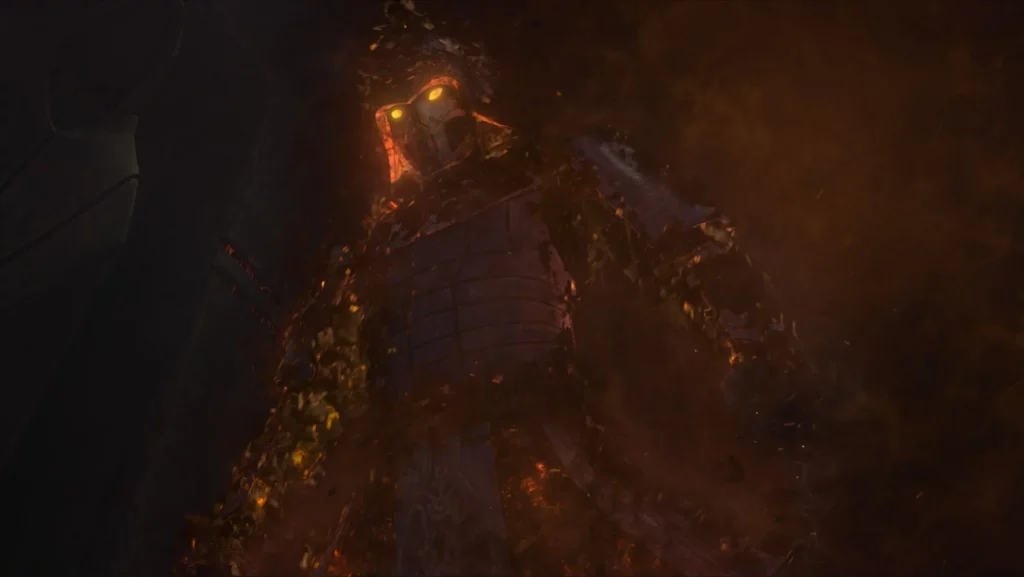
First Appearance: “Star Wars: Darth Bane: Path of Destruction” (2006)
Known For: Establishing the Rule of Two
Character History: Born as Dessel, Bane grew up on the mining planet Apatros. He joined the Sith Brotherhood of Darkness but became disillusioned with their infighting. Seeking ancient Sith teachings, he discovered the Sith Holocron of Darth Revan and formulated the Rule of Two, ensuring only two Sith exist at any time to maintain their strength and secrecy.
Coolest/Best Moment: Creating the Rule of Two and orchestrating the Brotherhood of Darkness’s self-destruction with a thought bomb, showcasing his strategic genius and deep understanding of Sith philosophy.
Darth Plagueis
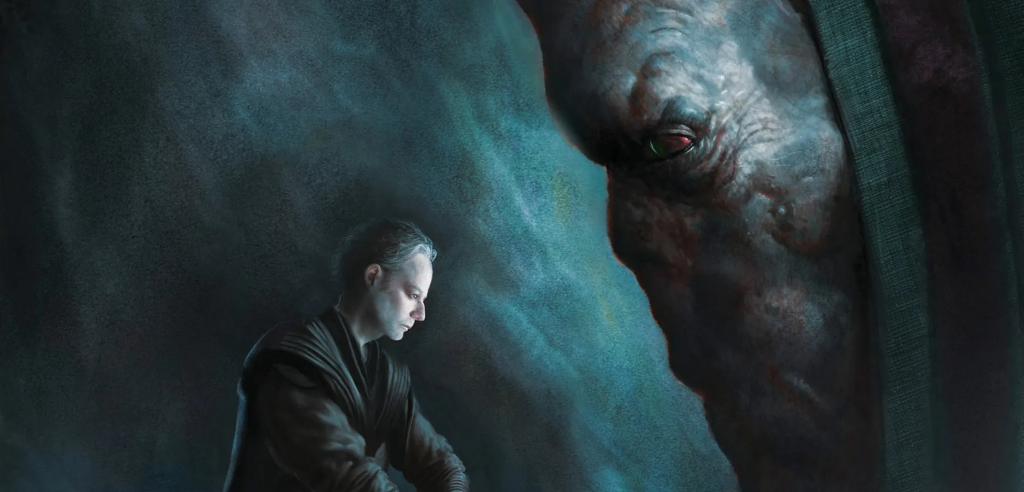
First Appearance: Mentioned in “Star Wars: Episode III – Revenge of the Sith” (2005)
Known For: His mastery over life and death
Character History: Darth Plagueis was a Sith Lord obsessed with achieving immortality. He trained Darth Sidious and conducted experiments on manipulating the Force to prevent death. Despite his immense power, he was ultimately betrayed and killed by his apprentice, Sidious, in a classic Sith manner.
Coolest/Best Moment: His teachings to Sidious, which laid the groundwork for the eventual rise of the Galactic Empire and the fall of the Jedi.
Darth Sidious (Emperor Palpatine)

First Appearance: “Star Wars: Episode V – The Empire Strikes Back” (1980)
Known For: Manipulating galactic politics to become Emperor
Character History: Born on Naboo, Palpatine became a senator and secretly trained as a Sith under Darth Plagueis. He orchestrated the fall of the Republic and the rise of the Galactic Empire, all while maintaining a facade as a benevolent leader. His ultimate goal was to achieve immortality and total control over the galaxy.
Coolest/Best Moment: The execution of Order 66, effectively wiping out the Jedi Order, demonstrating his strategic brilliance and ruthless efficiency.
Darth Maul
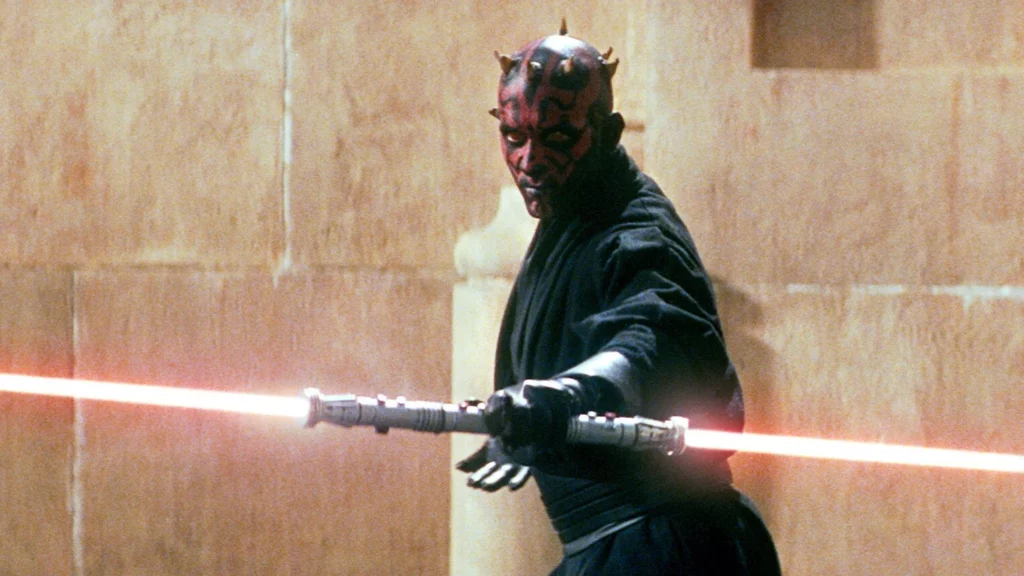
First Appearance: “Star Wars: Episode I – The Phantom Menace” (1999)
Known For: His double-bladed lightsaber and relentless pursuit of revenge
Character History: Trained by Darth Sidious, Maul was a fierce warrior with a deep hatred for the Jedi. After being presumed dead, he returned with a vengeance, orchestrating multiple schemes to exact revenge on his enemies, particularly Obi-Wan Kenobi.
Coolest/Best Moment: His duel with Qui-Gon Jinn and Obi-Wan Kenobi, where he showcases his agility and combat skills, ultimately killing Qui-Gon before being defeated by Obi-Wan.
Darth Tyranus (Count Dooku)
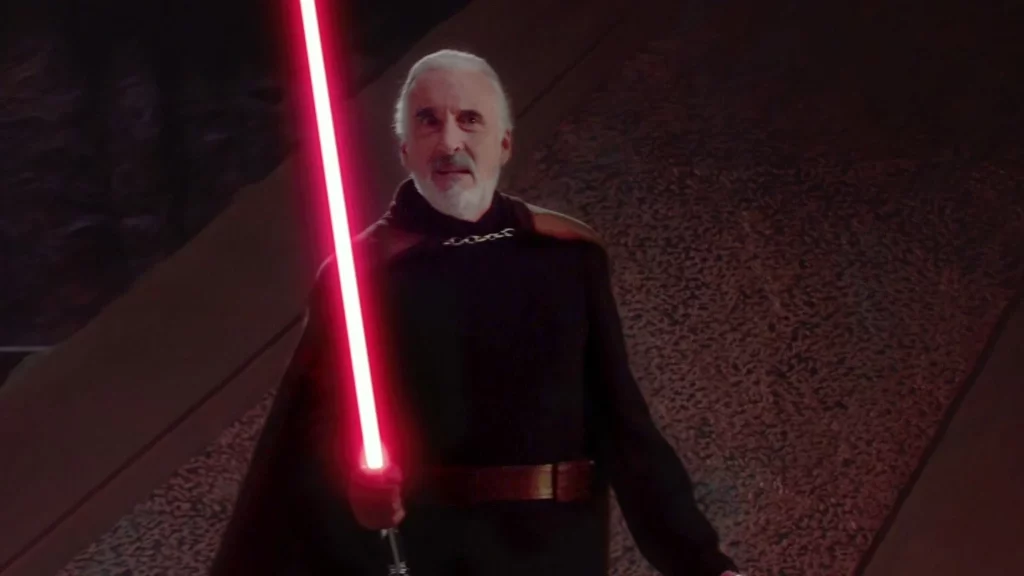
First Appearance: “Star Wars: Episode II – Attack of the Clones” (2002)
Known For: Leading the Separatists during the Clone Wars
Character History: Once a respected Jedi Master, Dooku became disillusioned with the Jedi Order and joined the Sith, taking the name Darth Tyranus. He played a pivotal role in the creation of the Separatist Alliance and the onset of the Clone Wars.
Coolest/Best Moment: His lightsaber duel with Yoda in “Attack of the Clones,” demonstrating his formidable combat skills and mastery of the Dark Side.
Darth Vader (Anakin Skywalker)
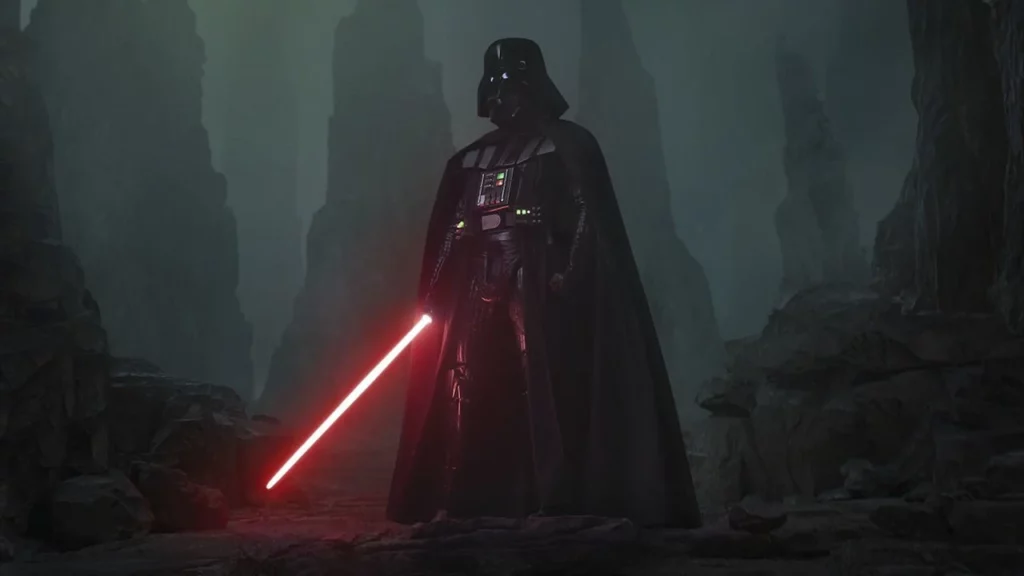
First Appearance: “Star Wars: Episode IV – A New Hope” (1977)
Known For: Being one of the most feared Sith Lords and his redemption arc
Character History: Anakin Skywalker was a gifted Jedi Knight who fell to the Dark Side due to his fear of loss and ambition. As Darth Vader, he became the enforcer of the Empire, committing numerous atrocities. His story is one of tragic fall and ultimate redemption through the love of his son, Luke Skywalker.
Coolest/Best Moment: His duel with Obi-Wan Kenobi on Mustafar, where he fully embraces his new identity as Darth Vader, symbolising his complete transformation from Jedi to Sith.
Apprentices, Dark Side Users, and Inquisitors
Asajj Ventress

First Appearance: “Star Wars: Clone Wars” (2003 animated series)
Known For: Being a deadly assassin and dark side user
Character History: Once a Jedi Padawan, Ventress fell to the Dark Side and became an apprentice to Count Dooku. She became a formidable warrior and assassin, seeking revenge against the Jedi who abandoned her.
Coolest/Best Moment: Her duel with Anakin Skywalker on Yavin 4, showcasing her impressive combat skills and dark side prowess.
Mother Talzin & The Nightsisters
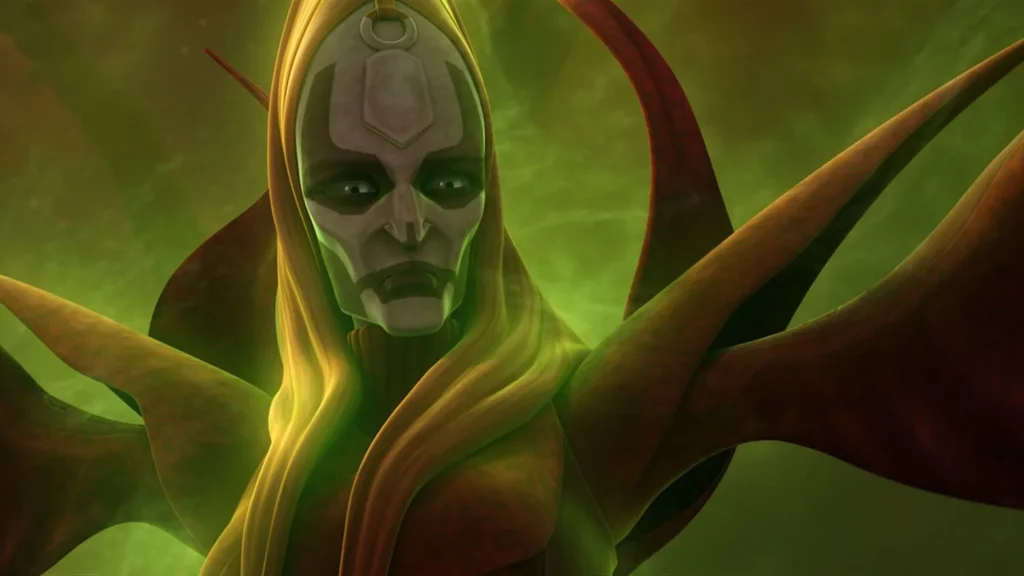
First Appearance: “Star Wars: The Clone Wars” (2008)
Known For: Dark magic and manipulation of the Force
Character History: Mother Talzin was the leader of the Nightsisters, a clan of Force-sensitive witches on Dathomir. She wielded powerful dark magic and sought to manipulate the galaxy’s events through her sons, including Savage Opress and Darth Maul.
Coolest/Best Moment: Resurrecting Darth Maul and restoring his mind, showcasing her immense power and influence.
Savage Opress
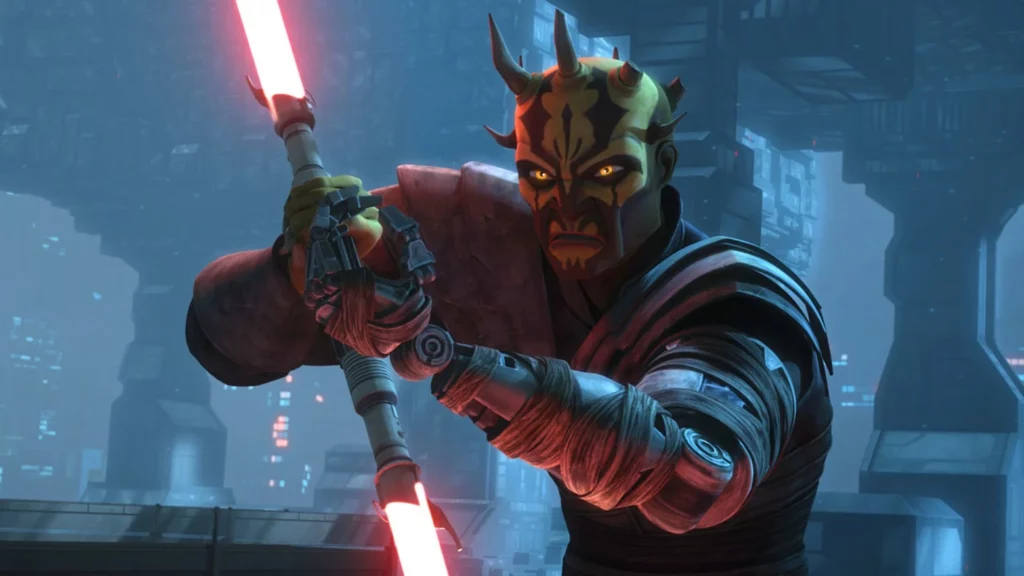
First Appearance: “Star Wars: The Clone Wars” (2010)
Known For: His brute strength and loyalty to his brother, Darth Maul
Character History: Savage Opress was a Zabrak warrior transformed by the Nightsisters into a formidable dark side user. He served as an apprentice to both Count Dooku and Darth Maul.
Coolest/Best Moment: His rampage through the Jedi Temple on Coruscant, demonstrating his raw power and unyielding ferocity.
The Grand Inquisitor

First Appearance: “Star Wars Rebels” (2014)
Known For: Hunting down Jedi survivors of Order 66
Character History: A former Jedi Temple Guard, the Grand Inquisitor turned to the Dark Side and became the leader of the Inquisitors, tasked with hunting down and eliminating Jedi survivors.
Coolest/Best Moment: His duel with Kanan Jarrus and Ezra Bridger, showcasing his skill and ruthlessness.
Fifth Brother
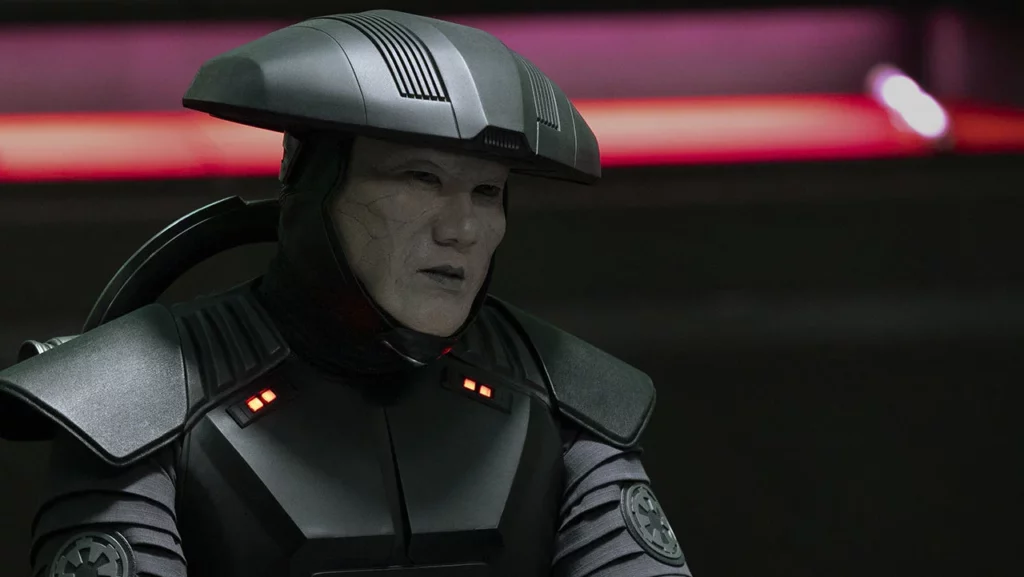
First Appearance: “Star Wars Rebels” (2015)
Known For: His brute strength and hunting Jedi
Character History: The Fifth Brother was an Inquisitor tasked with hunting down Jedi survivors. He was known for his physical strength and combat prowess.
Coolest/Best Moment: His relentless pursuit of Kanan and Ezra, highlighting his determination and strength.
Eighth Brother
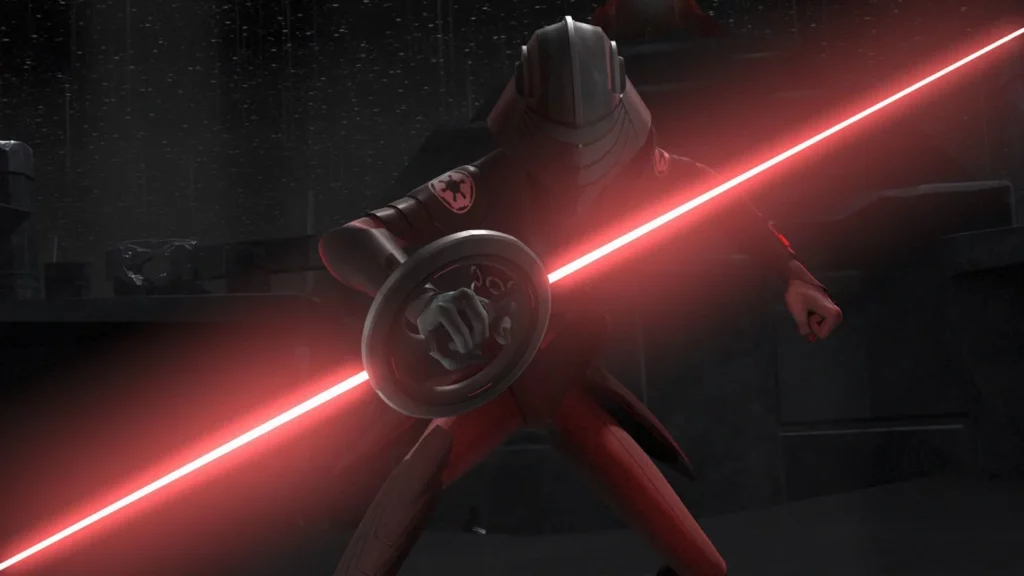
First Appearance: “Star Wars Rebels” (2016)
Known For: His agility and combat skills
Character History: The Eighth Brother was an Inquisitor who specialised in agility and fast combat, making him a formidable opponent for any Jedi.
Coolest/Best Moment: His confrontation with the Jedi on Malachor, showcasing his agility and combat skills.
Seventh Sister
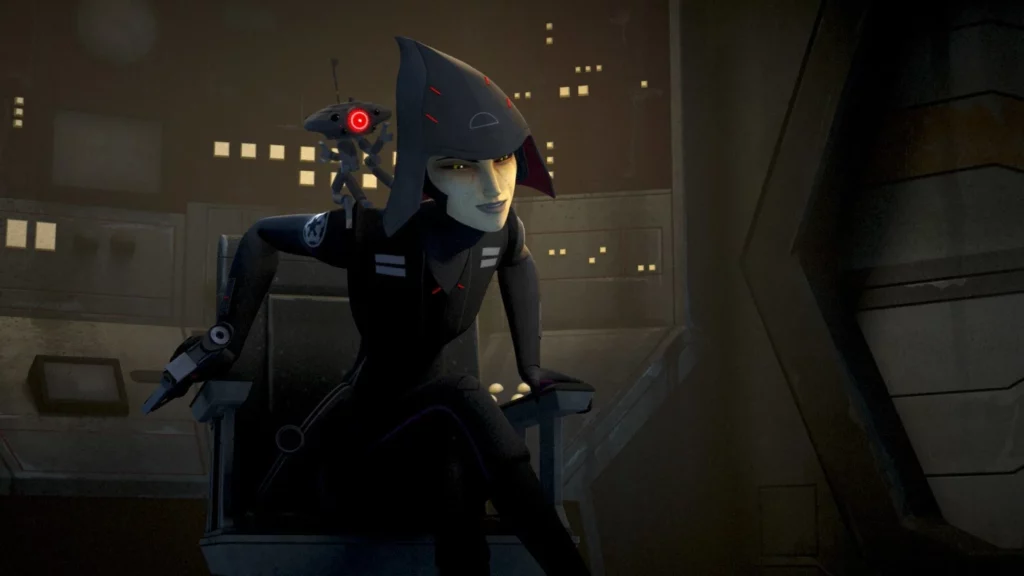
First Appearance: “Star Wars Rebels” (2015)
Known For: Her cunning and hunting skills
Character History: The Seventh Sister was an Inquisitor known for her cunning and skill in tracking down Jedi survivors. She often used probe droids to assist in her hunts.
Coolest/Best Moment: Her relentless pursuit and duels with Ahsoka Tano and the Ghost crew, demonstrating her cunning and combat abilities.
Barriss Offee

First Appearance: “Star Wars: Episode II – Attack of the Clones” (2002)
Known For: Her fall to the Dark Side and betrayal of the Jedi
Character History: Once a Jedi Padawan, Barriss Offee became disillusioned with the Jedi Order and orchestrated a bombing of the Jedi Temple, framing Ahsoka Tano.
Coolest/Best Moment: Her lightsaber duel with Anakin Skywalker, revealing her betrayal and fall to the Dark Side.
Kylo Ren

First Appearance: “Star Wars: Episode VII – The Force Awakens” (2015)
Known For: His conflict between the Light and Dark Sides and leadership of the First Order
Character History: Born Ben Solo, the son of Leia Organa and Han Solo, he was seduced to the Dark Side by Supreme Leader Snoke and became Kylo Ren. He struggled with his heritage and the pull of the Light Side throughout his journey.
Coolest/Best Moment: His climactic duel with Rey in “The Rise of Skywalker,” where he ultimately rejects the Dark Side and embraces his identity as Ben Solo.
Supreme Leader Snoke

First Appearance: “Star Wars: Episode VII – The Force Awakens” (2015)
Known For: Ruling the First Order and manipulating Kylo Ren
Character History: A dark side user and puppet created by Emperor Palpatine to lead the First Order and seduce Kylo Ren to the Dark Side. Snoke’s true nature and origins were revealed in “The Rise of Skywalker.”
Coolest/Best Moment: His brutal demonstration of power and control over Kylo Ren and Rey in “The Last Jedi,” showcasing his immense Force abilities before his unexpected demise.
Sith Training and Apprenticeship
The Rule of Two
The Rule of Two is a fundamental Sith doctrine established by Darth Bane. It dictates that only two Sith Lords can exist at any given time: a master to embody power and an apprentice to crave it. This rule prevents the infighting that plagued the Sith Order in the past and ensures that each Sith generation grows stronger.
Training Methods
Sith training is brutal and unforgiving, designed to weed out the weak and cultivate the strong. Apprentices undergo rigorous physical and mental training, often involving dangerous missions and trials. They are taught to harness their emotions, use the Dark Side of the Force, and master lightsaber combat.
Notable Master-Apprentice Relationships
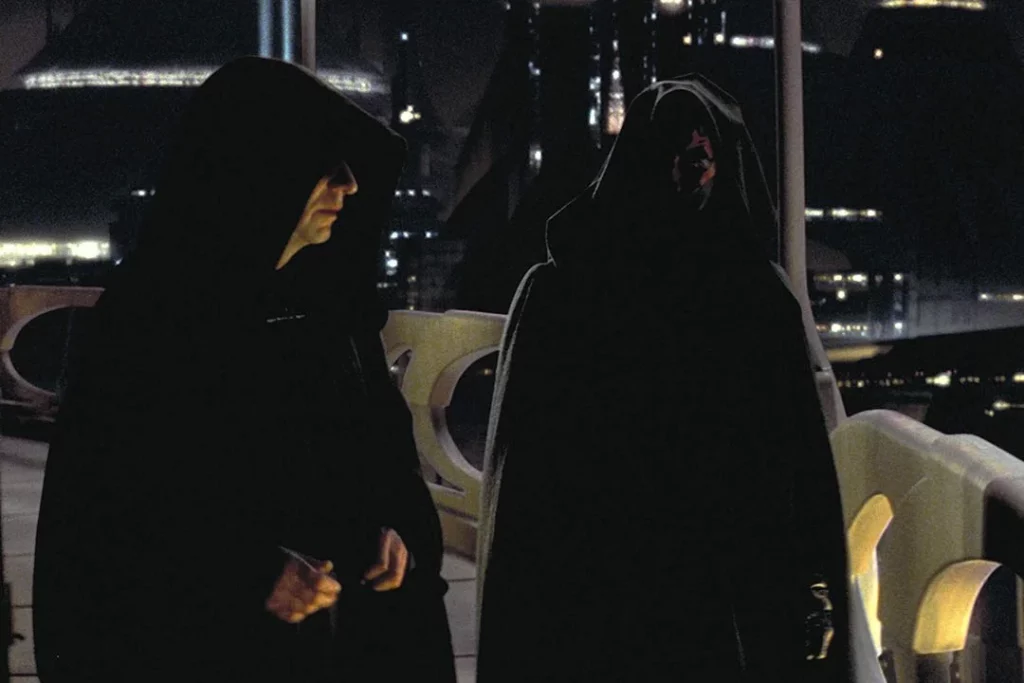
Darth Sidious and Darth Maul: Sidious trained Maul from a young age, turning him into a formidable Sith assassin.

Darth Sidious and Darth Vader: Sidious manipulated Anakin Skywalker into becoming Darth Vader, training him to be his powerful enforcer.
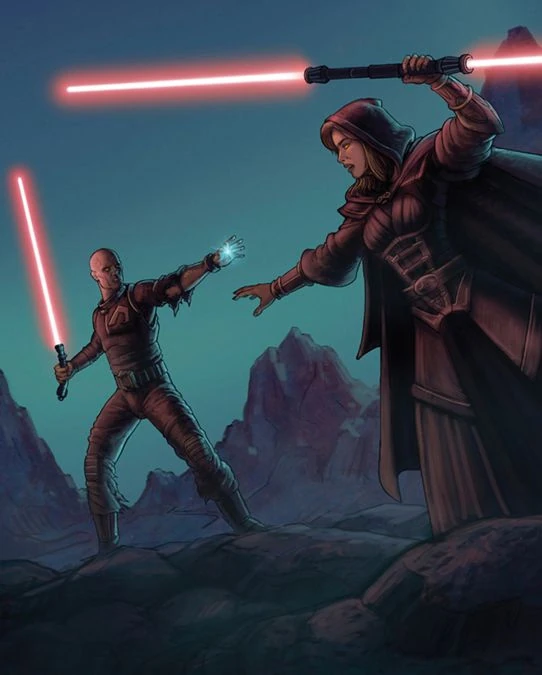
Darth Bane and Darth Zannah: Bane trained Zannah to carry on the Rule of Two, ensuring the survival and strength of the Sith Order.
These relationships are marked by manipulation, betrayal, and the relentless pursuit of power, reflecting the core principles of the Sith.
Sith Artefacts and Relics
Sith Holocrons
Sith Holocrons are ancient repositories of knowledge and dark side secrets, created by Sith Lords to store vast amounts of information. These pyramid-shaped devices can only be accessed by those strong in the dark side, and they often contain teachings, histories, and powerful dark side techniques.
Creation and Design: Sith Holocrons are crafted using intricate Sith alchemy and dark side rituals. They are typically designed to test the user’s worthiness, ensuring that only those with sufficient dark side mastery can unlock their secrets.
Notable Sith Holocrons:
- Darth Revan’s Holocron: Discovered by Darth Bane, this Holocron contained valuable knowledge that helped Bane establish the Rule of Two.
- Darth Andeddu’s Holocron: Known as the “Holocron of Heresies,” it contains forbidden knowledge on Sith immortality and essence transfer.
- Darth Sidious’s Holocron: Used by Emperor Palpatine to store his extensive knowledge of Sith techniques and dark side powers.
Legendary Sith Weapons
Sith Lords often wield unique and formidable weapons, many of which are imbued with dark side energy. These weapons are not only tools of destruction but also symbols of the Sith’s power and authority.
Lightsabers: The primary weapon of the Sith, lightsabers constructed by Sith Lords often use synthetic crystals to produce a distinctive red blade. Some notable Sith lightsabers include:

Darth Vader’s Lightsaber: A menacing red blade constructed by Vader after his fall to the dark side.

Darth Maul’s Double-Bladed Lightsaber: Known for its unique design and deadly efficiency in combat.

Darth Sidious’s Lightsabers: Dual lightsabers concealed in the sleeves of his robes, used with deadly precision.
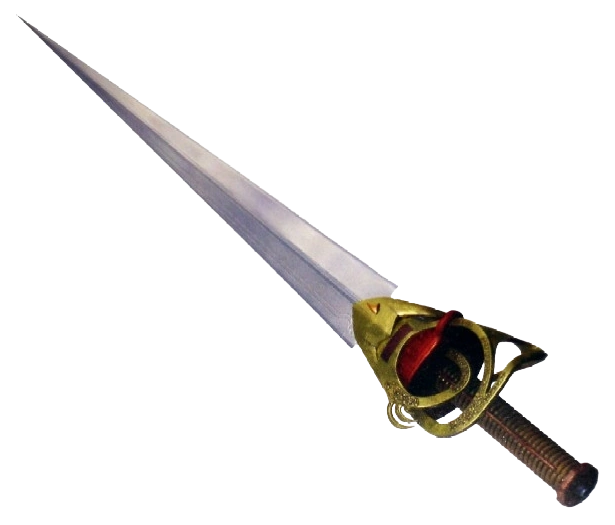
Sith Swords: Ancient Sith warriors often wielded Sith swords, forged using Sith alchemy to enhance their strength and imbue them with dark side energy. These weapons were predecessors to modern lightsabers and were capable of cutting through most materials.
Key Temples and Tombs
Sith Temples and tombs are sacred sites where Sith Lords meditated, conducted rituals, and were often interred upon death. These locations are steeped in dark side energy and serve as reservoirs of Sith knowledge and power.
Korriban: The ancestral home of the Sith species and the site of many Sith tombs. Notable tombs on Korriban include:
- The Valley of the Dark Lords: An expansive necropolis containing the tombs of ancient Sith Lords such as Ajunta Pall, Marka Ragnos, and Tulak Hord.
- The Tomb of Naga Sadow: A massive burial site containing powerful artefacts and dark side secrets.
Malachor: A planet with a dark history, known for its Sith Temple and the devastating superweapon powered by a giant Kyber crystal.
- Ziost: Another significant Sith world, often used as a political and military centre by the ancient Sith Empire.
- Dark Force Temple: A site of immense dark side power, where Sith Lords would conduct dark rituals and meditations.
- Sith Temple on Malachor: An ancient structure that housed a weapon capable of petrifying entire armies, symbolising the destructive power of the Sith.
Sith Artefacts
In addition to Holocrons and weapons, the Sith created numerous artefacts imbued with dark side energy. These relics were often used to enhance their power, conduct rituals, or manipulate the Force in unique ways.
- Amulets and Talismans: Sith amulets were worn to protect against lightsaber strikes, enhance dark side abilities, and sometimes control Sithspawn.
- Naga Sadow’s Amulets: Worn by the ancient Sith Lord, these amulets amplified his powers and allowed him to control Sith alchemy creations.
- Sith Alchemy: The art of using the dark side to alter the physical world, create powerful potions, and transform living beings into Sithspawn.
- Sithspawn: Creatures twisted by Sith alchemy, including monstrous war beasts used in battles against the Jedi and the Republic.
- Sith Scrolls and Texts: Ancient manuscripts and books containing dark rituals, spells, and prophecies.
- The Book of Sith: A compilation of Sith writings and teachings, providing insights into the philosophy, history, and power of the dark side.
The artefacts and relics of the Sith are more than mere tools; they are symbols of the dark side’s enduring legacy. Each item holds a piece of Sith history, offering a glimpse into the minds of those who sought ultimate power and control. These objects continue to intrigue and inspire, reminding us of the perpetual struggle between light and dark.
The Sith and Galactic Politics
The Sith’s Role in the Galactic Empire
The Sith played a crucial role in the formation and operation of the Galactic Empire. Under the leadership of Emperor Palpatine (Darth Sidious), the Sith used political manipulation, fear, and military might to establish and maintain control over the galaxy. Their influence permeated all levels of government and military, ensuring that the dark side’s power was felt throughout the galaxy.
- Rise to Power: Palpatine’s rise to power was meticulously planned and executed. As a senator from Naboo, he portrayed himself as a humble public servant while secretly orchestrating events to weaken the Galactic Republic and create a state of crisis.
- Manipulation of the Senate: Palpatine’s manipulation of the Galactic Senate allowed him to amass emergency powers and transition from Chancellor to Emperor. This manipulation was achieved through a combination of political manoeuvring, coercion, and the strategic use of the Clone Wars.
- Military Expansion: The Sith’s influence ensured the creation of a massive military force. The Clone Army, initially presented as a means of defending the Republic, became the backbone of the Empire’s military might, enforcing the Emperor’s will across the galaxy.
Political Manoeuvring
Sith political strategies are characterised by deception, cunning, and ruthlessness. The Sith often use proxies, hidden agendas, and strategic alliances to achieve their goals. Palpatine, in particular, was a master of political manipulation, playing multiple sides against each other to ensure his rise to power and the establishment of the Galactic Empire.
- Order 66: One of the most infamous examples of Sith political manoeuvring was Order 66, a contingency order that led to the extermination of the Jedi Order. This order was executed flawlessly, eliminating the Jedi as a threat and consolidating the Sith’s power.
- The Separatist Movement: Led by Count Dooku (Darth Tyranus), the Separatist Movement was a key element in Palpatine’s plan to destabilise the Republic. By creating a war on two fronts, Palpatine ensured that the galaxy would be thrown into chaos, allowing him to position himself as the saviour and ultimate ruler.
Key Events
Major political events involving the Sith have shaped the galaxy’s history, leading to significant shifts in power and the establishment of the Sith’s rule. These events demonstrate the Sith’s ability to manipulate large-scale conflicts and use them to their advantage.
- The Clone Wars: A galaxy-wide conflict orchestrated by Darth Sidious to weaken the Republic and pave the way for the Empire. The war served multiple purposes: it created a pretext for militarisation, allowed Palpatine to amass unprecedented power, and spread the Jedi thin across the galaxy, making them vulnerable to Order 66.
- The Rise of the Empire: Following the Clone Wars, the Galactic Republic was transformed into the Galactic Empire, with Sidious as Emperor and Vader as his enforcer. This transformation was marked by the suppression of dissent, the centralisation of power, and the establishment of a regime based on fear and control.
- The Galactic Civil War: Even after the rise of the Empire, the Sith continued to influence galactic events. The Galactic Civil War, which pitted the Rebel Alliance against the Empire, was a direct consequence of the Sith’s actions and their oppressive rule. The eventual defeat of the Empire and the redemption of Darth Vader marked the end of the Sith’s direct control over the galaxy, but their legacy continued to influence events.
Sith Politics In Action
- The Fall of the Republic: The gradual erosion of democratic principles in the Galactic Republic was masterminded by Darth Sidious. His political acumen allowed him to turn the Republic’s institutions against themselves, using legal means to dismantle democracy from within.
- The Jedi Purge: Order 66 was the culmination of decades of planning. By embedding control chips in the clones, Sidious ensured that the Jedi, who had been the guardians of peace, would be seen as traitors and exterminated in a single, coordinated strike.
- The Formation of the Imperial Senate: While ostensibly a continuation of the Galactic Senate, the Imperial Senate was a tool for consolidating power. It allowed Sidious to maintain a veneer of legitimacy while centralising authority and eliminating political opposition.
Influence on Subsequent Politics
Even after the fall of the Empire, the Sith’s influence on galactic politics persisted. The power structures and methods of control established by the Sith were studied and, in some cases, replicated by subsequent regimes.
- The First Order: Rising from the remnants of the Empire, the First Order adopted many of the Sith’s methods, including a focus on military might, fear, and political manipulation. Supreme Leader Snoke, and later Kylo Ren, used Sith teachings to attempt to restore Sith dominance.
- The New Republic: In contrast, the New Republic sought to avoid the centralisation of power that characterised the Empire. However, the scars left by the Sith’s rule influenced the New Republic’s policies, leading to internal conflicts and challenges.
The Sith’s mastery of political manipulation, fear, and military strategy allowed them to shape the galaxy’s history profoundly. Their ability to exploit weaknesses in political systems and use large-scale conflicts to their advantage ensured their dominance for decades. The legacy of the Sith in galactic politics is a testament to their cunning, ruthlessness, and strategic brilliance.
The Sith in Popular Culture
Portrayal in Movies and TV Shows
The Sith have been integral to the Star Wars narrative, appearing prominently in the films and expanding their influence through various TV shows. Their portrayal has evolved over time, but their essence as dark side practitioners seeking power and control has remained consistent.
- Movies:
- Original Trilogy (Episodes IV-VI): Introduced Darth Vader and Emperor Palpatine, establishing the Sith as the primary antagonists. Their portrayal in these films set the foundation for their roles in the Star Wars saga.
- Prequel Trilogy (Episodes I-III): Explored the rise of the Sith, with key figures like Darth Sidious, Darth Maul, and Darth Tyranus. These films delved into the Sith’s machinations to overthrow the Jedi and the Republic.
- Sequel Trilogy (Episodes VII-IX): Introduced new dark side users influenced by the Sith, such as Kylo Ren and Supreme Leader Snoke. The legacy of the Sith continued to impact the galaxy long after their apparent defeat.
- TV Shows:
- Star Wars: The Clone Wars: Expanded on the Sith’s influence during the Clone Wars, featuring characters like Asajj Ventress and Savage Opress. It provided deeper insights into their strategies and conflicts.
- Star Wars Rebels: Introduced the Inquisitors, dark side agents hunting Jedi survivors. The show also featured Darth Maul’s continued quest for power and revenge.
- The Mandalorian: While primarily focused on other aspects of the Star Wars universe, it hinted at the lingering presence of dark side influence through characters like Moff Gideon.
Iconic Scenes and Quotes
The Sith are known for their memorable scenes and quotes, which have left a lasting impact on popular culture. These moments have become defining aspects of the Star Wars saga and are frequently referenced by fans.
Iconic Quotes
- Darth Vader: “I find your lack of faith disturbing.” – A demonstration of Vader’s ruthless control.
- Emperor Palpatine: “I am the Senate.” – Palpatine’s declaration of absolute power.
- Darth Vader: “I am your father.” – The shocking revelation to Luke Skywalker in “The Empire Strikes Back.”
- Kylo Ren: “Let the past die. Kill it, if you have to.” – Kylo’s philosophy on power and change.
Memorable Scenes:
- Duel on Mustafar: The climactic battle between Obi-Wan Kenobi and Anakin Skywalker in “Revenge of the Sith,” showcasing Anakin’s full transformation into Darth Vader.
- Order 66: The heartbreaking montage of Jedi being betrayed and killed, orchestrated by Darth Sidious in “Revenge of the Sith.”
- Throne Room Battle: The intense battle in “The Last Jedi” where Rey and Kylo Ren team up against Snoke’s guards, highlighting the complexity of their relationship with the dark side.
- Emperor’s Throne Room: The final confrontation between Luke Skywalker, Darth Vader, and Emperor Palpatine in “Return of the Jedi,” culminating in Vader’s redemption.
Influence on Pop Culture
The Sith have had a profound influence on popular culture, inspiring various forms of media, merchandise, and fan activities. Their dark allure and complex characters have made them enduring icons.
- Merchandise: Sith-themed toys, clothing, and collectibles are highly popular among fans. Items like Darth Vader helmets, lightsabers, and Sith action figures are staples in Star Wars merchandise.
- Video Games: Games like “Star Wars: Knights of the Old Republic” and “Star Wars: The Force Unleashed” allow players to explore Sith characters and lore, often delving into dark side choices and abilities.
- Literature: Numerous books and comics expand on the Sith’s history, philosophy, and influence. Titles like “Darth Bane: Path of Destruction” and “Darth Plagueis” provide deeper insights into individual Sith Lords.
- Fan Activities: Fans engage in various activities inspired by the Sith, including cosplay, fan fiction, and fan art. Conventions often feature panels and discussions focused on Sith lore and characters.
The Sith’s portrayal in movies, TV shows, and other media has cemented their status as some of the most iconic villains in popular culture. Their memorable quotes, scenes, and enduring legacy continue to inspire and captivate audiences. The dark allure of the Sith ensures that they remain a central part of the Star Wars saga and an influential force in the broader cultural landscape.
Sith Rituals and Practices
Dark Side Rituals
Sith rituals are powerful ceremonies that often involve complex incantations, sacrifices, and the manipulation of dark side energies. These rituals are used to increase a Sith Lord’s power, commune with ancient Sith spirits, and achieve various dark side feats.
- Ritual of Essence Transfer: This is one of the most dangerous and coveted Sith rituals. It allows a Sith Lord to transfer their consciousness into another body, effectively achieving a form of immortality. Darth Plagueis and Darth Sidious were both known to have studied this ritual extensively.
- Dark Side Meditation: Sith Lords often engage in deep meditation to strengthen their connection to the dark side. These meditations can take place in locations strong in dark side energy, such as Sith temples or battlefields where many have perished.
- Blood Sacrifice: Some Sith rituals require a blood sacrifice to summon dark side energies or appease Sith spirits. This practice is rooted in ancient Sith traditions and is often used in rituals to gain favour from the dark side.
Role of Alchemy and Sorcery
Sith alchemy and sorcery involve the manipulation of the Force to alter reality, create powerful artefacts, and enhance their physical abilities. These practices are ancient and often require extensive knowledge and dark side mastery.
- Sith Alchemy: This dark art is used to create Sithspawn—creatures twisted and enhanced by dark side energy. It also includes the forging of Sith swords and the creation of dark side-infused talismans and amulets.
- Sithspawn: Examples include the Massassi warriors, who were originally Sith alchemically enhanced to serve as soldiers and guardians.
- Sith Swords: These are weapons created through alchemical processes, making them resistant to lightsaber strikes and imbued with dark side energy.
- Force Lightning: A destructive power generated through Sith sorcery, allowing a Sith Lord to unleash bolts of pure dark side energy. This ability is often used to torture, kill, and demonstrate power.
- Necromancy: Some Sith, like Darth Andeddu, practised necromancy, the dark art of raising the dead or communing with Sith spirits. This practice underscores the Sith’s obsession with life, death, and immortality.
Significant Rites of Passage
Rites of passage are crucial in the training and development of a Sith apprentice. These trials test their strength, loyalty, and mastery of the dark side, ensuring that only the strongest rise to power.
- The Trial of the Cave: This is a common rite where an apprentice must face their fears and inner darkness within a dark side-infused cave. Success in this trial often leads to deeper insights into their own power and potential.
- The Challenge of the Blade: A combat trial where an apprentice must prove their lightsaber skills against a formidable opponent. This trial is designed to test their combat prowess and readiness to become a Sith Lord.
- Survival Trials: Apprentices are sometimes left in hostile environments with minimal resources, forcing them to rely on their dark side abilities and cunning to survive. Darth Bane subjected his apprentice, Darth Zannah, to such trials to strengthen her resolve and power.
Influence on Modern Sith
The rituals and practices of the ancient Sith continue to influence modern Sith and dark side users. The methods and knowledge passed down through Holocrons and Sith texts ensure that these dark arts remain an integral part of Sith training and philosophy.
- Kylo Ren’s Dark Side Meditation: Kylo Ren, like his predecessors, engaged in dark side meditation to strengthen his connection to the dark side. His training under Snoke included various dark rituals designed to deepen his power and resolve.
- Sith Eternal Cultists: The Sith Eternal, a cult dedicated to reviving the Sith Order, utilised ancient Sith rituals to clone and sustain Emperor Palpatine on Exegol. Their practices highlight the enduring legacy of Sith alchemy and sorcery.
The rituals and practices of the Sith are a testament to their relentless pursuit of power and mastery over the dark side. From alchemical creations to dark side meditations, these practices reveal the depths of Sith knowledge and their willingness to push the boundaries of the Force. Understanding these rituals provides insight into the Sith’s enduring influence and the dark allure that continues to captivate audiences.
The Legacy of the Sith
The legacy of the Sith continues to influence the Star Wars universe long after their apparent defeat. Their teachings, artefacts, and dark side practices are continually discovered and studied by new generations, ensuring that the dark side remains a potent force in the galaxy.
- Sith Eternal: A cult dedicated to reviving the Sith Order, the Sith Eternal played a significant role in “The Rise of Skywalker.” They sought to restore the Sith to power, demonstrating the enduring allure of Sith teachings and the dark side.
- Dark Side Adepts: Individuals who continue to study and practise Sith teachings, ensuring that the dark side’s presence remains in the galaxy. These adepts often seek out Sith artefacts and Holocrons to gain greater power and knowledge.
Future Sith in Media
Speculation about future Sith characters and stories continues to excite fans and fuel discussions about the future of the Star Wars franchise. The potential for new Sith Lords and dark side users to emerge keeps the Sith legacy alive in the minds of fans.
- Potential Characters: New Sith Lords or dark side users could emerge in upcoming movies, TV shows, or books, expanding the Sith lore. These characters might be descendants of famous Sith or entirely new figures who discover ancient Sith teachings.
- New Stories: Stories exploring the origins, rise, and fall of the Sith could provide deeper insights into their philosophy and history. Such narratives could delve into unexplored periods of Sith history or follow new characters as they uncover long-lost Sith secrets.
Impact on Fandom
The Sith have had a profound impact on the Star Wars fan community, inspiring countless fan theories, fan fiction, and discussions about the nature of the dark side. The complex and morally ambiguous nature of the Sith makes them compelling subjects for exploration and debate.
- Fan Activities: Fans create elaborate costumes, participate in lightsaber duels, and engage in detailed analyses of Sith lore and characters. Conventions often feature panels and discussions focused on Sith history, philosophy, and influence.
- Cultural Phenomenon: The Sith’s influence extends beyond the Star Wars fandom, impacting broader pop culture and media. References to the Sith and the dark side appear in various forms of entertainment, from movies and TV shows to books and video games.
Influence on Modern Sith
The methods and knowledge passed down through Holocrons and Sith texts ensure that Sith teachings remain an integral part of dark side training and philosophy. Modern Sith and dark side users continue to draw on these ancient practices to enhance their power.
- Supreme Leader Snoke: Created by Palpatine, Snoke’s manipulation of Kylo Ren and leadership of the First Order are direct results of Sith teachings and influence. His existence exemplifies how the Sith legacy persists through proxies and clones.
- Acolytes of the Beyond: A group of dark side devotees who appeared in the “Aftermath” book series, these acolytes worshipped Darth Vader and sought Sith artefacts. Their actions illustrate the continued reverence for Sith Lords and the desire to emulate their power.
The legacy of the Sith is a testament to their enduring influence and the dark allure that continues to captivate audiences. From ancient rituals and artefacts to modern dark side adepts and Sith cults, the Sith’s impact on the galaxy and popular culture is profound and lasting. Understanding this legacy provides a deeper appreciation for the complex and morally ambiguous nature of the Sith, ensuring their place as central figures in the Star Wars saga.
The Sith’s Significance
The Sith have played a pivotal role in shaping the Star Wars saga, driving the conflict and providing some of the most memorable characters and moments. Their complex philosophy, relentless pursuit of power, and mastery of the dark side make them compelling and enduring figures in the Star Wars universe.
- Historical Impact: From the ancient Sith species to the rise of the Galactic Empire, the Sith’s influence on galactic history is profound. Their actions have led to wars, the fall of the Jedi Order, and the creation of the Empire.
- Philosophical Depth: The Sith Code and their beliefs in passion, strength, and power offer a stark contrast to the Jedi Code, providing a rich tapestry of moral and philosophical conflict.
- Cultural Influence: The Sith’s portrayal in movies, TV shows, and other media has cemented their status as some of the most iconic villains in popular culture. Their dark allure and complex characters have made them enduring icons.
The allure and mystery of the Sith continue to captivate audiences, ensuring their legacy remains a central part of Star Wars lore. Whether you’re a lifelong fan or new to the series, understanding the Sith provides a deeper appreciation for the epic story that has captivated generations.
The Sith are more than just antagonists in a beloved franchise; they represent a deep exploration of the themes of power, corruption, and redemption. Their stories challenge us to consider the nature of good and evil, the allure of power, and the consequences of our choices.
Additional Resources
Recommended Reading and Viewing
To delve deeper into the lore of the Sith and expand your understanding of their dark legacy, here are some essential books, movies, and TV shows:
- Books:
- “Star Wars: Darth Bane: Path of Destruction” by Drew Karpyshyn
- “Star Wars: Darth Plagueis” by James Luceno
- “Star Wars: The Book of Sith” compiled by Daniel Wallace
- Movies:
- “Star Wars: Episode I – The Phantom Menace“
- “Star Wars: Episode II – Attack of the Clones“
- “Star Wars: Episode III – Revenge of the Sith“
- “Star Wars: Episode IV – A New Hope“
- “Star Wars: Episode V – The Empire Strikes Back“
- “Star Wars: Episode VI – Return of the Jedi“
- “Star Wars: Episode VII – The Force Awakens“
- “Star Wars: Episode VIII – The Last Jedi“
- “Star Wars: Episode IX – The Rise of Skywalker“
- TV Shows:
Links to Key Lore Sources
For more detailed lore and in-depth information on the Sith, consider visiting these websites and resources:
- Wookieepedia: The ultimate Star Wars wiki for detailed lore and character information.
- StarWars.com: The official site for news, updates, and official lore.
